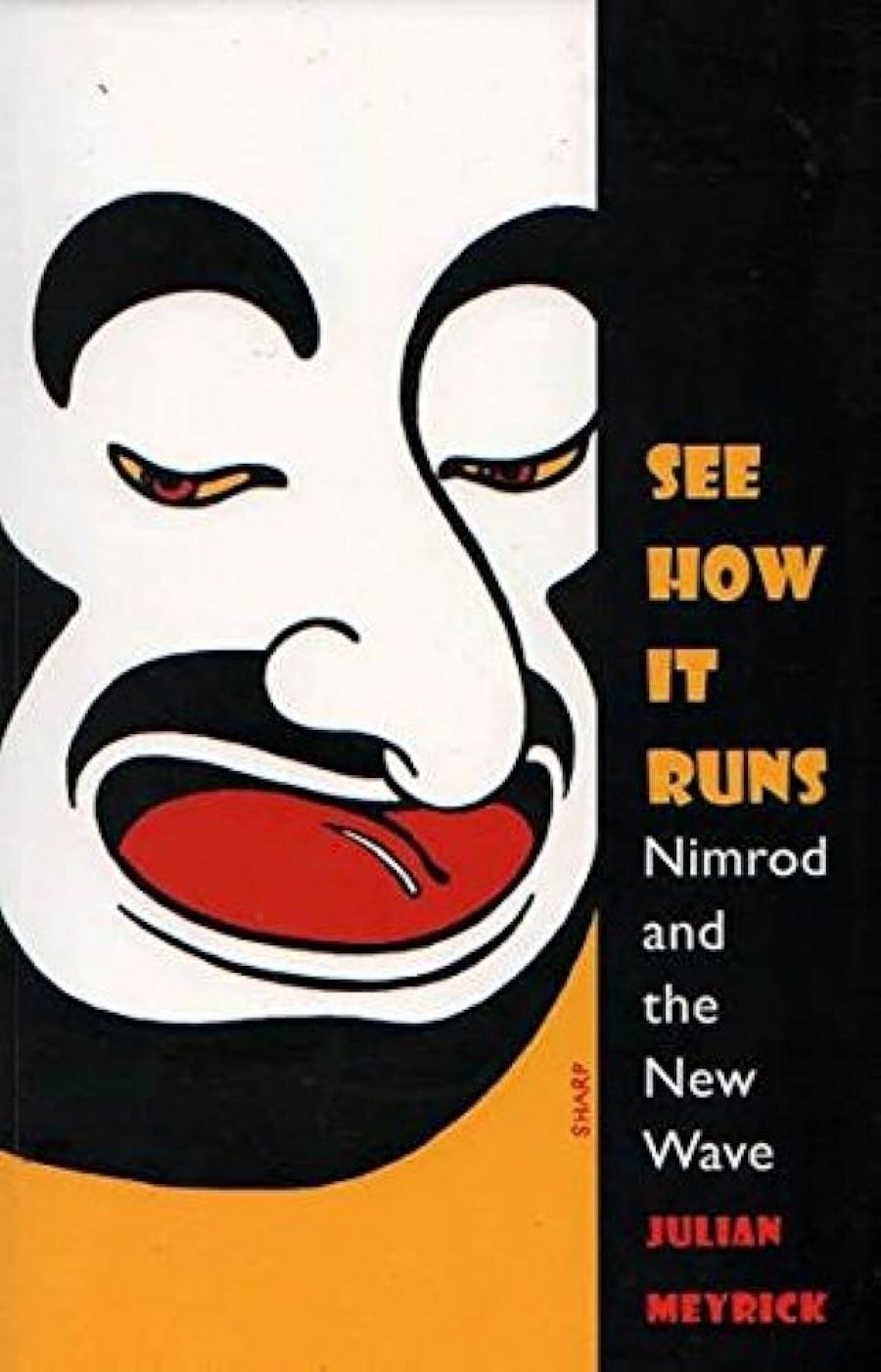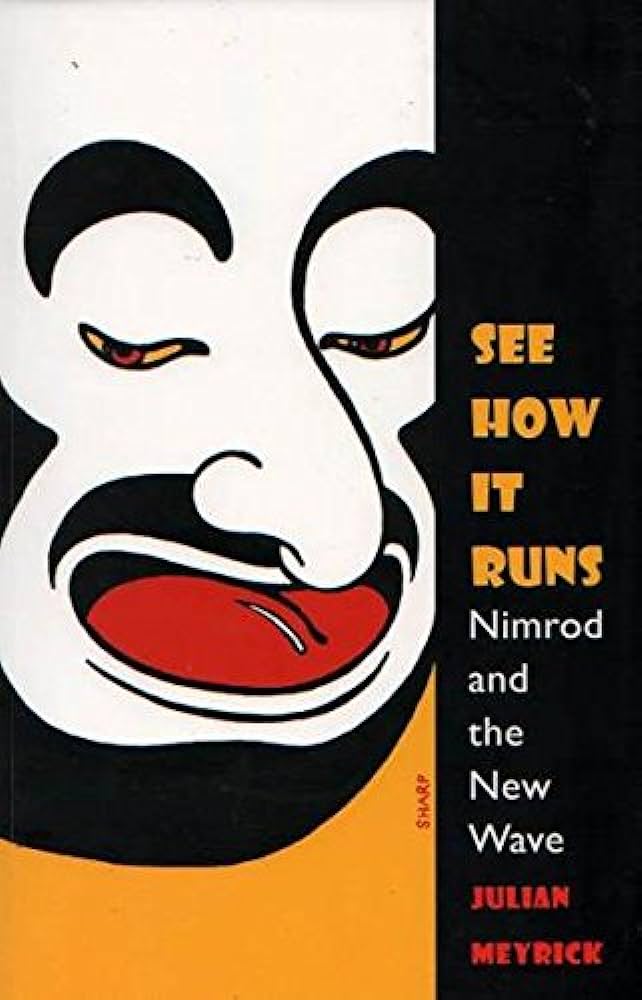
- Free Article: No
- Contents Category: Theatre
- Review Article: Yes
- Online Only: No
- Custom Highlight Text:
It is snatching some kind of victory out of defeat, I suppose, to write a Ph.D. thesis about the rise and fall of a theatre company, and Julian Meyrick has successfully transformed thesis into book. This has been achieved mainly through very good writing; lively, intelligent and uncluttered by jargon. The formal paraphernalia of the thesis – notes, appendices, statistics, bibliography and index – are not only useful in themselves, but crucial evidence for the argument.
- Book 1 Title: See How It Runs
- Book 1 Subtitle: Nimrod and the New Wave
- Book 1 Biblio: Currency Press, $39.95 pb, 312 pp, 0 86819 651 7
- Book 1 Cover Small (400 x 600):

- Book 1 Cover (800 x 1200):

Where Tim Robertson’s book The Pram Factory: The Australian Performing Group Recollected, curiously unmentioned in Meyrick’s book (and which I reviewed in ABR, September 2001), gave an unabashed, demotic account of what it was like to be part of the APG phenomenon, See How It Runs provides a cool analysis of a complex process of entropy. Nevertheless, while it is the scholarly and frequently self-reflexive methodology that constrains, authorial opinion has a welcome presence in the form of refreshingly decided perspectives and vivid descriptive powers.
The death of the APG was mercifully abrupt, signalled by the sale of the Pram Factory, sealing a fate that was already inevitable. Nimrod’s death throes, in contrast, were messy and protracted, a rich brew of ‘internal feuds, financial mismanagement, artistic putrescence, [and] corporate collapse’, according to Meyrick. The dates of the rise and fall of the two theatrical enterprises are virtually identical, from 1970 to 1981 (Pram) and to 1987 (Nimrod), although Meyrick only takes his account to 1985, suggesting that it would be merely dissecting a corpse after that date. Two things are analogous here: the New Wave phenomenon of iconoclastic, nationalistic, ‘rough’ theatre practice, and the precise trajectory of adolescence, youth and inevitable ageing of the baby boomers. This is cultural history, an astute analysis of a particular organisation that can stand for an entire social movement.
From a Melbourne perspective, and with a knowledge not only of Robertson’s book but also of the earlier history of La Mama produced by Liz Jones and Betty Burstall (1988), Nimrod’s history is characterised by its more politically powerful and artistically high-profile participants. This was partly because Nimrod’s structure was always more hierarchical than that of the rather turgid democracy of the APG. Nimrod was also one of three players in a long battle for a ‘national’ theatre, based in Sydney, along with the earlier Old Tote (1962–78) and the later Sydney Theatre Company (1979 to present). Nimrod’s emphasis on professionalism was there from the start, paying actors for rehearsals, for example. Its founding artistic directors – Ken Horler, John Bell and Richard Wherrett – were already well-entrenched professionals. While their early programming was still deliberately alternative to the classics-oriented Old Tote, it still had traces of the Anglo theatre that Meyrick identifies as antithetical to the New Wave.
Three legendary productions in its first year put Nimrod on the theatrical map: The Legend of King O’Malley, directed by John Bell; Oedipus Rex, directed by Tyrone Guthrie; and Hair, directed by Jim Sharman. The first three years of programming were characterised by eclecticism (from Hamlet on Ice to Hamlet), energy, cheek, bad taste and, above all, fun. Further gingering up the rich brew was the new Whitlam government’s doubling of arts subsidies in 1972.
As early as 1974, a downturn in Nimrod’s life cycle could be discerned, beginning with Ken Horler being forced out, followed in 1979 by Richard Wherrett’s move to the directorship of the Sydney Theatre Company. Meyrick’s analysis of programming in the 1974–79 period is startling. It reveals a strangely abrupt shift from ‘fun’ to dark plays (the hugely popular Venetian Twins being an important exception). Whether these were non-Australian contemporary, classic or New Wave, they were characterised by conflict, violence and breakdown. Among the Australian writers, Stephen Sewell and Louis Nowra replaced Alex Buzo and David Williamson.
This suggests there was a company Zeitgeist at work that would eventually result in an implosion of creative energy, or, as Meyrick puts it, ‘leadership weakness, programming ambivalence, organisational instability’. His detailed description and analysis of the protracted death throes provide an object lesson in theatrical patterns. After all, most of Australia’s theatre history consists of the same pattern, seemingly endlessly repeated.
Meyrick frequently employs the rhetorical technique of asking questions then providing answers and evidence. His discussion of the New Wave is crucial to his thesis, yet it often rests on a set of assumptions and generalisations, rather than emerging from textual and production analysis of actual examples. Where this does occur, his text lights up considerably, such as in the analysis of the first three productions.
Amongst all the carefully teased-out strands that led to the downward spiral of Nimrod, one stands out as crucial. It prospered, artistically and financially, as long as it had a sense of its own unique commitment and values. This meant, in practice, that leadership was crucial to steer a steady course through the distractions of competing egos, ideologies and values. Yet when John Bell took over the already-listing ship, Meyrick suggests personal ambition and a will to power only helped to scupper it. At an earlier stage of the story, however, he reveals how more democratic processes led to a fatal confusion of issues with feelings.
The other aspects of this life cycle, of course, were the actual life stages of the participants. Meyrick isolates rejection of parents as an early shaping factor among the young theatre workers of the early Nimrod. The rejection of authority, whether it was canonical theatre, a Liberal government, colonialism, or temperance at the theatre bar, only lasted as long as the relative powerlessness of youth. Maturity brought inevitable compromises, and contradictions grew up everywhere.
What is particularly impressive about See How It Runs is the range and depth of its intellectual context. Meyrick’s range of references means that this history is placed relevantly among world theatre movements and analysed in terms of postmodern theory. He interrogates his own key terms, and provides some dialogue with other Australian theatre historians and critics.
There is some sense, in the latter parts of the book, that Meyrick is shackled by the many statistics he cites, no matter how astutely they are analysed. Yet I think we should recognise that this book will not only lift the standard of theatre history in this country, but also provide authoritative grounds for more speculative and free-wheeling versions of cultural history that might concentrate more on the artistic products themselves. The transparency of Meyrick’s methodology is also welcome, including the drawing of our attention to the quantitative techniques of historical research that he employs here. Thus, the two most important sets of figures he uses are financial statements and a complete list of the artistic repertoire.
As someone who is deeply involved in Melbourne’s theatre scene, I can only hope that an equally impressive, analytic and well-informed cultural history of the same, seminal period in Melbourne will eventually appear.


Comments powered by CComment